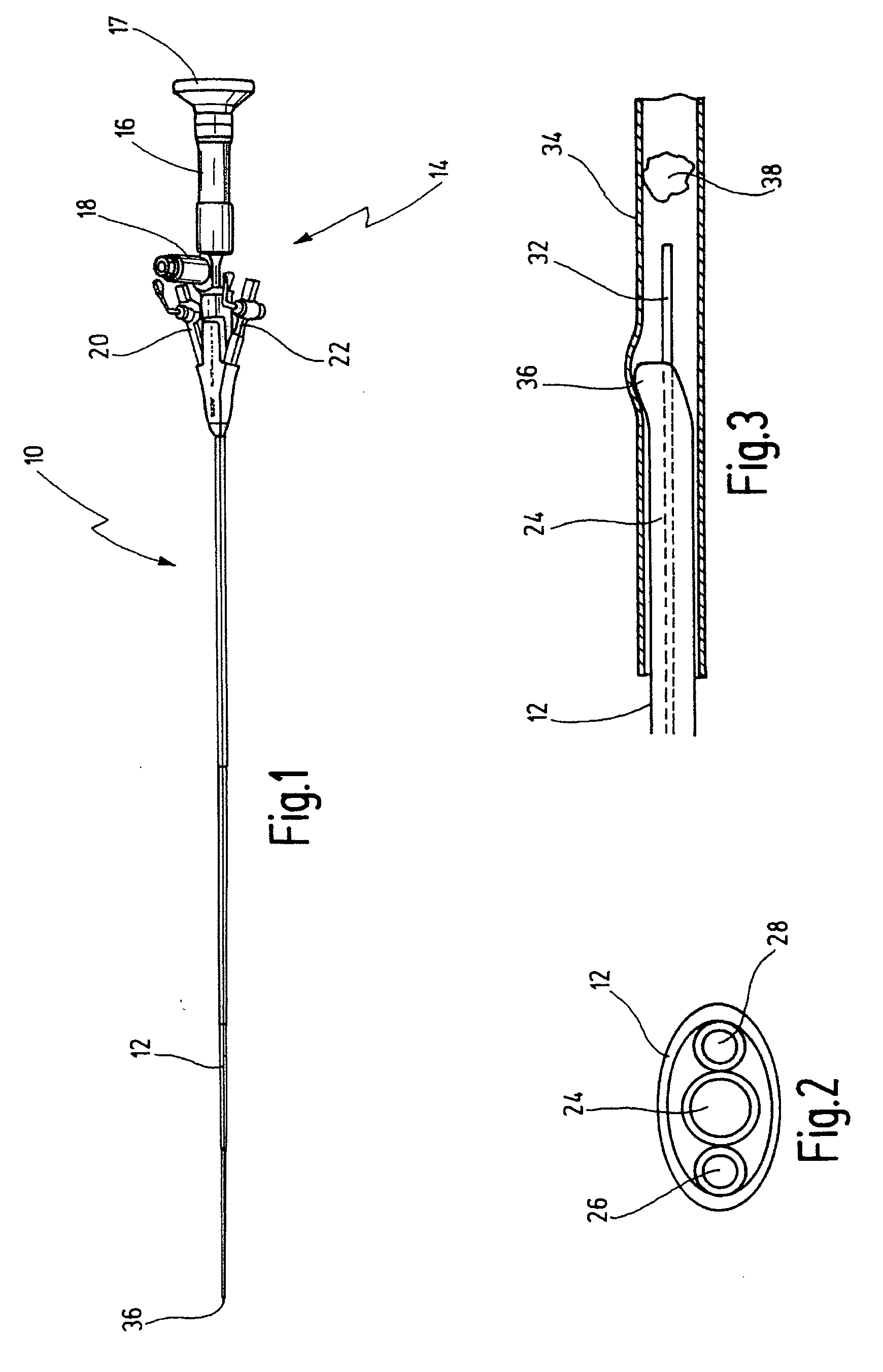Medical instrument, in particular uretero-renoscope
a technology of ureterorenoscope and ureteral artery, which is applied in the field of medical instruments, can solve the problems risk of damage to the ureter wall, and lateral deflection and penetration into the ureter wall, so as to save space
- Summary
- Abstract
- Description
- Claims
- Application Information
AI Technical Summary
Benefits of technology
Problems solved by technology
Method used
Image
Examples
Embodiment Construction
[0027] A medical instrument 10 shown in FIG. 1 is in the form of a uretero-renoscope.
[0028] The medical instrument 10 has an elongate shaft 12 and a head part 14. The head part 14 accommodates an optical system 16 which ends in an eyepiece cup 17. A light guide is attached via a lateral connector piece 18.
[0029] There are also two further connector pieces 20 and 22 which are each provided with a cock (not specifically shown here), for example for guiding irrigation fluids into the shaft 12 or for suctioning these fluids off again through the shaft 12.
[0030] The shaft 12 has a length of approximately 35 cm and a diameter of 3.5 mm.
[0031] The cross section of the shaft 12 is circular along most of its length; in the distal end area the cross section is oval or flattened. From the plan view of the distal end 36 of the shaft 12 in FIG. 2, it will be seen that an instrument channel 24 is arranged centrally therein, in the present case centrally and coaxially. Alongside the central in...
PUM
 Login to View More
Login to View More Abstract
Description
Claims
Application Information
 Login to View More
Login to View More - R&D
- Intellectual Property
- Life Sciences
- Materials
- Tech Scout
- Unparalleled Data Quality
- Higher Quality Content
- 60% Fewer Hallucinations
Browse by: Latest US Patents, China's latest patents, Technical Efficacy Thesaurus, Application Domain, Technology Topic, Popular Technical Reports.
© 2025 PatSnap. All rights reserved.Legal|Privacy policy|Modern Slavery Act Transparency Statement|Sitemap|About US| Contact US: help@patsnap.com


